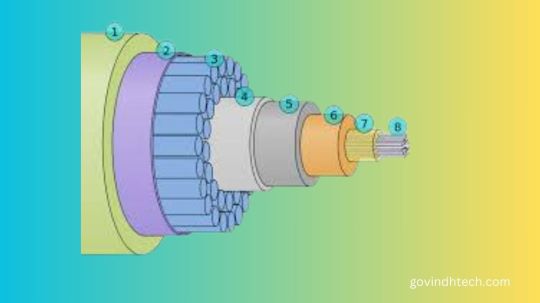#subseacable
Explore tagged Tumblr posts
Text
Developing new subsea cables to connect South Pacific

Google are unveiling today the details of the South Pacific Connect program, which will assist improve the resilience and dependability of digital connection in the Pacific by deploying two new transpacific subsea cables, Honomoana and Tabua.
Subsea cable routes in the South Pacific
The South Pacific Connect initiative, in partnership with several entities such as Fiji International Telecommunications, the Office of Posts and Telecommunications of French Polynesia, APTelecom, and Vocus Group, aims to establish new international subsea cables that will link Fiji and French Polynesia to the United States and Australia.
Honomoana, called for the Polynesian words for “ocean” (moana) and “link” (hono), will link French Polynesia with the United States and Australia. Named for a sacred whale tooth in Fiji, Tabua will link Fiji with Australia and the United States.
Furthermore, Fiji and French Polynesia will host physically distinct cable landing stations as part of the South Pacific Connect initiative, which will also connect them via an interlink cable. Through this, users in the Pacific Islands and worldwide will benefit from improved reliability, increased capacity, decreased latency, and connected transpacific connections.
Australia, Fiji, and French Polynesia will form a ring around each other thanks to the South Pacific Connect project. Pre-positioned branching units within this ring will enable additional Oceanian nations and territories to benefit from the initiative’s dependability and resilience. This is one of the first initiatives of its kind in the Pacific, offering a region vulnerable to natural disasters redundant international access.
In order to increase digital connection and resilience, the Government of Fiji is thrilled to collaborate with Google to reach this significant milestone. Google common goal is to open the door to a more digitally connected and secure future for Fiji as well as the Pacific region at large. With this collaboration, Google hope to create a long-lasting legacy of advancement, skill building, and economic prosperity that benefits everyone. Honorable Sitiveni Rabuka, Prime Minister of Fiji, said, “Fiji expresses its profound gratitude to Google for this collaboration and reaffirms its unwavering commitment to support this transformative initiative, dedicated to fostering peace, prosperity, and a brighter future for our people and the broader global community.”
The digital economy has been identified by the French Polynesian administration as one of the four main areas for social and economic advancement. “We are thrilled to have Google as our partner in this endeavor,” French Polynesia’s President Moetai Brotherson remarked.
“Fintel is thrilled to be working with the global technological giant, Google, to assist the South Pacific Connect initiative. The CEO of Fiji International Telecommunications, George Samisoni, stated, “This will strengthen Fintel and Fiji’s telecommunications hub status and provide the much-needed reliable and resilient connectivity between the people of the Pacific and the rest of the world.”
“Vocus is thrilled to be Google’s preferred partner for executing the South Pacific Connect initiative, which will greatly improve the resilience, capacity, and dependability of Australia’s global connectivity. According to Ellie Sweeney, CEO of Vocus, “the system will establish three distinct Australian landings along with dual cable paths to the US, substantially improving the resilience of Australia’s critical connections to the world.”
OPT has been developing its underwater cable network since 2010 in an effort to close the digital gap for isolated islands and provide internet connectivity to the people of French Polynesia. In light of this, OPT is proud to work with Google to expand its network and expertise in this fantastic project for Google region and communities, following in the footsteps of Honotua (2010), which linked Tahiti to Hawaii, and Natitua (2018 and 2023) which linked 22 islands of Tuamotu, Marquisas, and Australes archipelagos to Tahittiti, as well as Manatua (2020), which linked Tahiti to Cook Islands, Niue, and Samoa.
“Partnering with Google is a great example of how companies can work together to accelerate and deliver connectivity solutions that will change the world,” stated Eric Handa, CEO of APTelecom. “Increasing the reliability and resilience of digital connectivity in the Pacific is a fundamental objective of APTelecom.”
Sustainable cable laying in the South Pacific
Subsea cables increase internet accessibility and dependability, which boosts productivity and the economy. People can learn new skills that lead to job prospects and businesses and public sector organizations can provide better customer and constituency service with more access to digital services. Google are thrilled about the implications for their users and Google Cloud clients in the Asia-Pacific region and globally.
As Google collaborate closely with their partners to close the digital divide and enhance connection throughout the Pacific, Google look forward to sharing more.
Read more on Govindhtech.com
1 note
·
View note